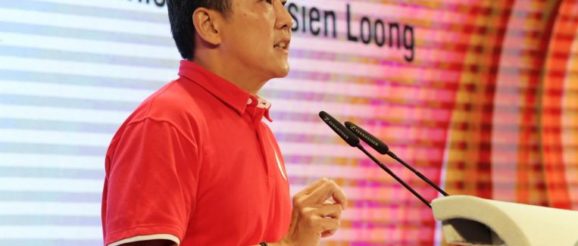NTUC wants to reach 1.5 million members by 2030, through innovation and digitalisation

SINGAPORE – The labour movement has set what its chief calls a “bold, ambitious” target of reaching 1.5 million members by 2030, even though it has yet to meet its previous target of one million members.
Union membership here has grown over the past four years, but tapered recently, and the labour movement must innovate and digitalise in order to stay relevant to workers, said NTUC secretary-general Ng Chee Meng.
“In representation and relevance the strategic performance indicator is membership numbers,” he told reporters at a media briefing on Wednesday (Oct 16) after the close of the National Delegates Conference (NDC).
“If unions don’t have that kind of strength and presence, workers don’t have that kind of protection.”
The NTUC has an “aspirational timeline” of reaching the target of 1.5 million members by 2025, but will be happy to reach it by 2030 given the uncertain environment, Mr Ng added.
The NDC is held once every four years for union leaders to discuss the National Trades Union Congress’ plans for the next four years and elect a new central committee. About 400 union leaders at the NDC unanimously agreed on the strategy and membership target.
There were 943,000 NTUC members last year, up from 896,200 in 2015, Mr Ng said in his report as NTUC secretary-general.
Though this is still shy of the target of one million members which it had aimed to reach by 2015, it is about 30 per cent of the workforce here. This is better than the rate of unionisation in Organisation for Economic Cooperation and Development (OECD) members which has fallen to about 16 per cent, down from about 30 per cent in 1985, he said in a speech during the NDC opening ceremony on Tuesday.
In the United States, the rate is around 10 per cent, while in Malaysia, the rate is around 7 per cent.
“Many unions around the world are losing their relevance, and there are people who regard unions as a destructive force,” said Mr Ng, who is a Minister in the Prime Minister’s Office.
He outlined how in Singapore, as the workforce ages, a greater share become professionals, managers and executives (PMEs) and new technologies take root, the labour movement must innovate in the way it runs three key areas: union business, membership and training.
First, it is trying out new union models, such as representing both rank-and-file and PME staff together, as in the Banking and Financial Services Union and the Supply Chain Employees’ Union. But beyond this, there could be digital unions, where most of the interactions between unions and workers are done virtually.
Also, although the number of retrenchments here is still low, workers’ anxieties are high, said Mr Ng. NTUC is therefore studying how to start a “work security task force” to reduce the window between retrenchments and placements to reduce workers’ anxieties, while helping companies to reduce the costs of hiring and firing. Employment and Employability Institute (e2i) chief executive Gilbert Tan will oversee this, said Mr Ng.
Second, in terms of the membership model, NTUC will look at family memberships to better meet workers’ needs throughout different stages of life, said Mr Ng. He added that more details will be revealed later on.
NTUC must continue to see how to partner the Government “to ease the issues of an ageing population, ease the burdens of the double-sandwiched Singaporeans, and hopefully encourage more babies as well”, he added.
For example, a one-stop hub has been piloted in the Kampung Admiralty integrated development. People can drop off their children and elderly parents at My First Skool and the NTUC Health eldercare service centre before work, then pick them up again to have dinner at the Foodfare hawker centre and buy groceries at FairPrice before heading home. Mr Ng said NTUC hopes to replicate this model elsewhere.
Third, the NTUC wants to use data to better meet workers’ training needs. It wants to develop an artificial intelligence engine to crunch data on work experience, learning history and gender, for instance, to push learning suggestions to workers. The system could identify when there are changes in the worker’s industry if the worker has not gone for training in a while, and then nudge him to sign up for available subsidies and even offer available course slots from NTUC LearningHub.
“This may be an aspirational goal, but we should aim towards it. If we can reach Union 4.0, NTUC 4.0, with new digital capabilities, we can be value creating for new workers in Singapore and be the partner in this very important strategic direction to train workers for their success, and for the economy’s relevance,” said Mr Ng on Tuesday.
Mr Ng also called on union leaders to nudge workers to take action and take responsibility for their own learning.
